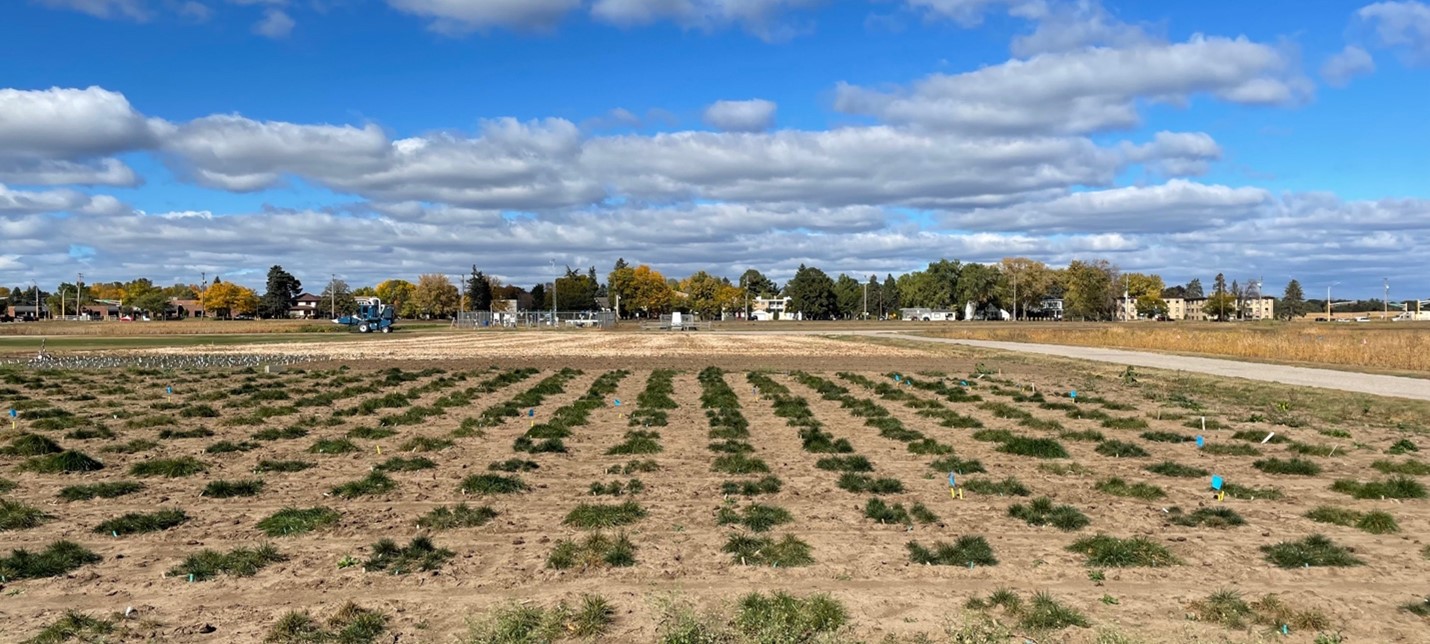By Maicy Vossen, University of Minnesota
Crown viability is key to survival of turfgrass after exposure to freezing temperatures. Previous research in the Sadok Lab at the University of Minnesota has shown that winter barley genotypes with smaller xylem vessels are more freeze tolerant than genotypes with larger xylem vessels [1]. At freezing temperatures, the smaller xylem vessel size prevents cells from breaking open. In the crown, having smaller xylem vessels could lead to less damage during freezing temperatures, leading to decreased loss of viability through winter.
Ultimately, the goal of our research is to develop a high-throughput vascular phenotyping method that can be used to determine freeze tolerance in turfgrass. This method will not require a freezing treatment and will be attainable through imaging of the xylem vessels. The beginning of this project is focusing on screening a population of 100 perennial ryegrass accessions for traits that enable one plant to be more freeze tolerant than another (Figure 1). These accessions are diverse in xylem vessel size. Screening will be accomplished through characterization of the plant micro-climate and environment in the field before and during winter, recording winter survival and phenotyping.

This project began in the summer of 2022. Before the first substantial snowfall and freezing temperatures, measurements were taken to understand how much photosynthetic stress the perennial ryegrass accessions were under leading up to winter. After the snow melts in the spring and the plants begin to grow again, survival of the accessions will be recorded. This data will be analyzed to find traits that are related to winter survival in perennial ryegrass. Eventually, these traits will be used to breed improved cultivars of perennial ryegrass that better tolerate winter stresses.
Reference
[1] Tamang, B., Lopez, J., McCoy, E., Haaning, A., Sallam, A., Steffenson, B., Muehlbauer, G., Smith, K., & Sadok, W. (n.d.). Association between xylem vasculature size and freezing survival in winter barley. Journal of Agronomy and Crop Science, 2022(208), 362–371. https://doi.org/10.1111/jac.12537